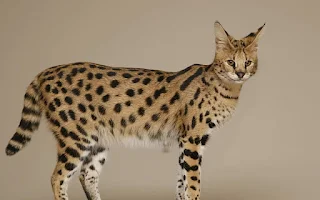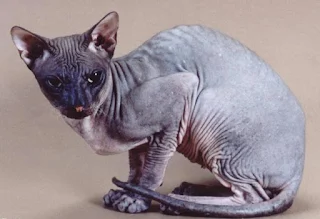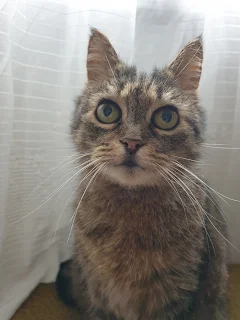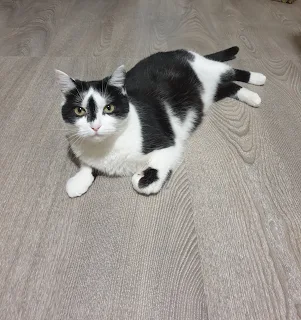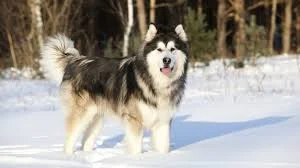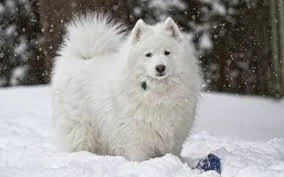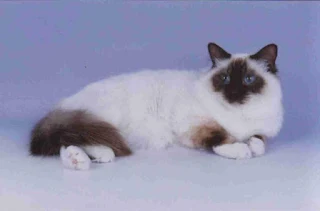The scratcher should initially be placed in the place where the cat was already scratching. Later, gradually, the scraper can be moved from one end of the room to the other, or you can get more scrapers.
Tuesday, December 13, 2022
WHY DO CATS SCRATCH?
Tuesday, December 6, 2022
Top 5 Most Expensive Cats In The World
Written By Xena
3. SAVANNAH CAT ($ 22,000)
4. SPHYNX CAT ($ 3,000)
5. PETERBALD CAT ($ 3,000)
If you are wondering which of these MOST EXPENSIVE BREEDS of cats is also the MOST AGGRESSIVE? There are no rules. It is true that some cats are a little harder to tame than others (SAVANNAH, BENGAL, AFRICAN SERVAL, SPHYNX).
But they are neither lions, nor jaguars, nor tigers, and they need discipline, proper care, attention, and affection. And with the right education, you can turn a tiger into your "hairy friend".
I'll be writing about MOST
AGGRESSIVE CATS in the next sequel of my BLOG about cats and dogs. In the
meantime, for more information about cats and dogs, visit my
https://www.youtube.com/channel/UCLBiSeK99poMzDuuyvzDUXg
"We have to take care of our pets as for ourselves."
VERY SMALL DOGS (up to 4 kg )
VERY SMALL DOGS are one of a total of 5
groups that make up BREEDS OF DOGS. This group consists of all dogs up to 4 kg.
ENJOY THE VIDEO !!!
LARGE DOGS PART IV
68.
SLOVAK CUVAC
69.
SPANISH GREYHOUND
70.
SPANISH POINTER
71.
OLD DANISH POINTER
72.
OLD ENGLISH SHEEPDOG
73.
SWEDISH ELKHOUND
74.
WHITE SWISS SHEPHERD DOG
75.
BRACCO ITALIANO
76.
SPINONE ITALIANO (ITALIAN SPINONE DOG)
77.
URUGUAYAN CIMARRON
78.
WEIMARANER
79.
GREAT ANGLO-FRANCAIS WHITE AND BLACK HOUND
80.
GREAT ANGLO-FRANCAIS WHITE AND ORANGE HOUND
81.
GREAT ANGLO-FRANCAIS TRICOLOR HOUND
82.
LARGE MUNSTERLANDER
83.
GRAND BLEU DE GASCOGNE
84.
GIANT SCHNAUZER
85.
GREATER SWISS MOUNTAIN DOG
86.
GRAND GRIFFON VENDEEN
87.
OTTERHOUND
88.
GOLDEN RETRIEVER
CATS THOSE WONDERFUL, MYSTIC CREATURES
WRITTEN BY XENA
However, history has not always caressed
these wonderful creatures.
Thus, for example, in the Middle Ages some
religions, including the Christian one, persecuted and killed CATS. Even during
the Renaissance, they were burned at the stake because they were associated
with witches and evil forces. It was a "dark age" for CATS. But over
time (early 17th century) such worldviews were abandoned, as CATS proved to be
indispensable in the fight against rodents, which transmitted the plague, and
which ravaged Europe. Thus, CATS became an important factor in human life and
part of the living community, and at the end of the 19th century, the first CAT exhibitions were opened. CATS make us happy and relaxed, but sometimes they also
make us sad. They give us the harmony of life, and "time spent with CATS is never wasted" - Sigmund Freud would say.
Then why do most people resort to DOGS as PETS? The answer to that question, I don’t know, but I can give you good
reasons why you’ll want to have a CAT.
CATS can be said to be intelligent creatures because they have a great ability to remember and learn. This is evidenced by the fact that they quickly discover how to get people to do exactly what they want - for example, they respond to their name when it's time for a meal. The memory serves them some useful information, such as the most comfortable place to sleep, favorite food or toy, and the place where their water bowl or their toilet is located.
The best reason to keep a CAT as a PET is
that it does not require much care. Namely, as they are very independent, they
only need a little of your attention in the form of a daily dose of cuddling
and playing, and providing basic living needs to be happy. They will also fill
you with happiness.
Maybe by reading this text, you are one step closer to getting your CAT. If so, then my advice is, “ADOPT, DO NOT BUY!” This will make you do a good deed and you will be more spiritually fulfilled, and that is then a good prerequisite for healthy living in general.
"We take care of our pets as for ourselves."
WHAT ARE THE MAIN DIFFERENCES BETWEEN ALASKAN MALAMUTE AND SAMOYED DOG?
WHERE DID SIBERIAN HUSKY COME FROM?
The SIBERIAN HUSKY breed was first mentioned by the CHUKCHI people, who are an autochthonous people inhabiting the CHUKCHI Peninsula, the shores of the CHUKCHI and BERING SEAS, and the Arctic Ocean within the former USSR (Siberia).
Monday, December 5, 2022
TOP 10 BREEDS OF CATS IDEAL FOR COEXISTENCE WITH DOGS
I recently shared with you my personal story of a lifelong unbreakable friendship between a cat and a dog. That dogs and cats do not have to be "sworn enemies" is also shown by the fact that some breeds of cats get along very well with dogs. I will now address this in particular in this post. So, I’m going to talk about cat breeds that get along very well with dogs. If you are a lover of both and would like to have them in your home, it would be a good idea to check out cat breeds that are ideal for coexistence with dogs. So I will make it easy for you and list 10 of them.
1. BURMESE CAT
It is
characterized by a strong connection with family members of all ages and a
great attachment to the owner, playfulness, and intelligence. In fact, she is
more intelligent than other breeds of cats. She is also the sweetest of all cat
breeds. She is an excellent pet and behaves a bit like a dog. She is very
talkative, but also a little mysterious. She will also show her friendliness
towards dogs. So it is no wonder that this beautiful cat with shiny hair and
yellow eyes is number one when it comes to living with dogs.
2. TURKISH ANGORA CAT
This
oriental long-haired beauty originates from the area of present-day Iran and
Turkey. It is a very smart and loyal cat, but also determined and stubborn. It
is strongly connected with only one person - it would be said: "She chooses
the owner". She is sociable, gets along well with other animals, including
dogs, and does not tolerate loneliness. In addition to playing, she also loves
swimming, as well as sitting on top of closets and doors. If you opt for this
beautiful cat, you will never want to replace it with another breed.
3.
ABYSSINIAN CAT
It is
one of the first breeds of cats to start living alongside humans. It originates
from the African wild cat and was brought to Europe from Africa. It is an
excellent hunter, but it is not aggressive, so it is ideal for keeping indoors.
Her temperament is balanced and stable. She loves to play with people and dogs alike. She has a habit of always being with the owner, so don't be surprised if she follows you in the footsteps of whatever you do. In return, she asks for
attention and cuddling. Therefore, if she misses it, she can very easily become
depressed. With proper care and nursing, this beauty will adorn your life for
another 20 years (that’s how long her life span is).
4. EUROPEAN SHORT-HAIRED CAT (CELTIC CAT)
It
originates from northern Europe, Scandinavia, and Great Britain, and originated
from an ordinary domestic cat. She is extremely attached to the owners and
suspicious of strangers. It coexists well with other breeds of cats and
non-aggressive dogs (after getting to know them well). This is a very lively
and intelligent breed of cat, and they are not prone to disease. They do not
require special care. It is enough, just a little time for combing, cutting
claws, and a few baths, for this cat to be flawless.
5. BIRMAN CAT (SACRED BIRMAN)
They
are also called SACRED BIRMANS because according to legend they are considered
the guardians of the souls of Buddhist priests.
The Burmese cat is recognizable by its white "socks" on its paws, distinctly blue eyes, and semi-long and shiny hair with dark parts (Colorpoint) on its head, ears, legs, and tail. They have an "angel" look, but also the same nature. They are real salon cats, but staying in the garden is a real challenge for them because, like all cats, they are curious and love to explore. Burmese cats are long-lived. Their average life expectancy is 15-17 years and they are not prone to diseases. By temperament, they are pretty calm, affectionate, and attached to their owners. They like to play, but they do it in moderation without too much chasing. They want to spend time napping in the owner's lap and are a great choice if you are also a dog owner.
6. AMERICAN BOBTAIL
This
breed of cat is also called "SNOW-BOB" and "YANKEE-BOB". It
is a relatively new breed of cat, created by a spontaneous gene mutation in The 1960s in America. It is recognizable by its very short tail. By the way, these
are very shrewd and intelligent cats, which sometimes know how to alleviate the
heated family atmosphere. They are very playful and have outstanding
coordination of movements, and are even able to catch an object in flight. A
good temperament allows them to get along with other pets, including dogs. Their
character and kindness tell us that they are the right choice for families with
children.
7. MAINE COON
She is
also called the "GENTLE GIANT", because of his size on the one hand
and his gentle character on the other. They are similar in behavior to dogs, so
they will get along well with them. They are very attached to the owner and
often accompany him in daily affairs. They are sociable, so they prefer to eat
in the company of other cats or humans. By no means they don't like to be alone.
Therefore, if you already have a dog, and you are also planning to a cat, then
"MAINE COON CAT" is the right choice for you.
8. NORWEGIAN FOREST CAT
This
breed of cat has been around for thousands of years, but its breeding began in
the 1930s. Her somewhat rugged appearance is the opposite of her character. It is
an extremely cuddly and gentle cat that will get along well with other cats and dogs. They rarely meow, but they often purr.
The
Norwegian Forest Cat is an excellent hunter and likes to climb high places, so
it is advisable to stock up on high scratchers.
Because
of its character, it will fit well into any family.
9. RAGDOLL
The Ragdoll is a relatively new breed of cat. It originated in California in the 1960s. They belong to one of the largest breeds of domestic cats. It is a very cuddly and "quiet" breed. She is very attached to her owners, so because of that, but also because of her intelligence, she is often compared to dogs. She is moderately playful, and her playing activity is limited to just a few minutes a day. But she likes to play lying on her back most of the time. It is adorned with a tolerant attitude toward other animals and children.
10. SIBERIAN CAT
The
Siberian cat is a very old, natural breed of cat native to Russia. This
beautiful long-haired beauty is a lively, playful, affectionate, and intelligent
pussy cat. Still, she is distrustful of strangers and does not like strangers in
the house. She has a great relationship with children, other cats, and dogs and
as such — is sociable, and does not tolerate loneliness. It gives a lot of love, and
in return, it only asks for your attention.
DO YOU FEAR INVASION OF TICKS AND FLEAS?
CAUTION-THE HIDDEN ATTACKERS FROM THE GRASS
Only one individual can lay
3,000 to 22,000 eggs.
They feed on the blood of
their host.
During feeding, the tick takes
only nutrients from the blood and the rest is returned to the host, thus
transmitting various dangerous diseases.
-PYROPLASMOSIS (DOG
BABESIOSIS)
-LYME BORELIOSIS
-MONOCYTIC ERLICHIOSIS
-GRANULOCYTIC ANAPLASMOSIS
Here I will focus exclusively
on PYROPLASMOSIS.
PYROPLASMOSIS (DOG BABESIOSIS)
is a deadly and as such the most dangerous disease that occurs in dogs but does
not affect cats.
The disease manifests itself
between 36 and 72 hours after the bite and the incubation lasts 5-7 days, or
in some cases 10-21 days.
Therefore, pay attention to the
following SYMPTOMS in your DOGS:
- high temperature and fever
(40-41 degrees Celsius)
- vomiting
- constipation or diarrhea
- loss of appetite and refusal
of food
- rapid breathing and heart
rate
- change in urine color
- pale mucous membranes
- marked weakness and fatigue
(helplessness, rapid fatigue, reluctance
movement, depression, the disinterest of the
animal)
Suppose you think that your pet has some of the above symptoms, and is infected with a tick. In that case, my warm advice is -
VISIT A VETERINARY IMMEDIATELY AND WITHOUT DELAY, because a QUICK reaction is
the MOST IMPORTANT in this disease. With timely therapy, you can save the LIFE
of your pet.
Except for dogs, are the CATS
immune to ticks? One of the diseases your cat can get from a tick and flea
bite is HEMOBARTONELOSIS or CAT INFECTIOUS ANEMIA. This disease attacks the red
blood cells of cats as well as dogs. In addition to being transmitted by a tick
or flea bite, it is possible for kittens to become infected through breast milk
if the cat is breastfeeding them.
SYMPTOMS OF THIS DISEASE ARE:
- fever
- pale or yellowish mucosa
- weakness
- depression
- possibly enlarged spleen
Cats infected with feline
leukemia (FeLV) and FIV (immunodeficiency syndrome) have a more severe form of
HEMOBARTONELOSIS and the clinical picture of the disease depends on the
immune status of the animal, the stage of the disease, and the severity of anemia.
And in this case, timely therapy saves the life of your pet. It is important to
emphasize that feline hemobartonelosis is NOT DANGEROUS TO HUMANS and that
humans CANNOT become infected through their pets.
Here are some tips:
1. REPLETE SPRAY AGAINST FLEAS AND TICKS
Ingredients:
3 drops of geranium essential
oil
3 drops of lemongrass
essential oil
3 drops of cedar essential oil
In the prepared bottle
(ideally a spray bottle) drip the oils of the mentioned plants and add a teaspoon of alcohol.
Close and shake the bottle to
bring the ingredients together.
After the mixture turns white,
add apple cider vinegar and water and shake again.
When using the product, avoid
applying it to the area around the nose, and take special care not to come into
contact with the eyes.
2. APPLE VINEGAR is a great
flea repellent.
Mix apple cider vinegar and
water in a ratio of 1: 1 and spray this liquid on your pet's hair. After that,
rub the liquid as much as possible on the skin with your hands or a brush.
Repeat every few days, until
complete elimination of parasites.
3. GERANIUM OIL is one of the
best natural repellents. It successfully repels fleas, ticks, and mosquitoes
from pets.
Due to its calming effect, it
is also known as an excellent antidepressant, so you can use it in moments when
your pet is exposed to stress.
REMEMBER: it
is important to remove ticks, as soon as possible, before the host becomes
infected!!!
"We take care of our pets as for ourselves."










